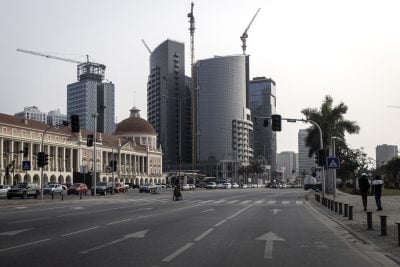The financial backing for Zimbabwe’s bond note programme has been called into question after analysts said that a $200m facility from the African Export-Import Bank (Afreximbank) to support the notes may not actually be in place.
“We understand that while Afreximbank is supporting trade within the gold industry, they have not committed to backing the bond note program directly,” said Gaimin Nonyane, head of the economics desk at Ecobank. “In reality, the central bank has just printed a new currency in the hopes that this will ease liquidity pressures but I doubt this will have the desired effect.”
At the same time, a financial analyst who declined to be named added: “It is our understanding that Afreximbank is not the guarantor of the new bond notes that have recently come into circulation in Zimbabwe. Contrary to recent media reports, this has been our understanding for the last month or so.”
A spokesperson for Cairo-headquartered Afreximbank declined to comment and referred all queries to the Reserve Bank of Zimbabwe (RBZ). While A Harare-based spokesperson for Afreximbank referred this publication to a 4 May 2016 press release on the bank’s website highlighting the relationship between Afreximbank and the bond note programme. However, that press release appears to be no longer available to view on the website.
Meanwhile, Douglas Muranda head of oversight and risk management at the RBZ stated on a phone call on Friday 2 December that the programme was indeed backed by Afreximbank. With conflicting information, the status of Afreximbank’s relationship with Zimbabwe’s bond note programme remains unclear.
New notes
The bond notes issued in denominations of $2 and $5, which came into circulation on the 28 November, were introduced by the central bank to alleviate dwindling dollar liquidity. Amid the cash crunch, doctors, nurses, teachers and other civil servants have either not been paid or have seen salary payments delayed as the government struggles to manage its budget.
The country has witnessed unprecedented protests this year, as Zimbabweans have become frustrated with the state of the economy, and the dissent has only intensified after the central bank revealed its plans to issue the bond notes.
Local news has reported that some commercial outlets are not accepting the new tender, while some members of the public have refused to receive the new bond notes in place of US dollar deposits made into bank accounts. Meanwhile, reports in the local media have claimed that the new bond notes have already lost value and are being traded on the black market for US dollars.
Many Zimbabweans fear that the bond notes will mark a return to the defunct Zimbabwe dollar, which was pulled from circulation in 2009 to end hyperinflation. At the time, the IMF said inflation had reached 500bn percent, effectively making the currency worthless.
Since then, Zimbabwe has been a multi-currency economy. The US dollars, the rand, euros and other currencies are legal tender in the country. “Because there is so little confidence in the new bond notes, it will be near impossible for the notes to remain on par with the US dollar,” says Nonyane.
“The only way in which the economy will attract liquidity through portfolio flows and foreign direct investment is if the government can promote significant political reform and reduce the wage bill – which is one of the largest in Africa – and promote some real structural economic change. As of yet, we have seen neither,” she added.
Last chance
Printing new notes was one of the last options left to Zimbabwe’s cash-strapped government, which has been largely barred from global capital markets due to the country being in arrears over debt repayments. According to the IMF, as of April this year, Zimbabwe’s total public and publicly guaranteed external debt was estimated at $6.96bn, which is equivalent to 49% of GDP. Around 80% of the debt was in arrears.
This was, however, reduced in October when the country cleared 15 years of arrears with the IMF itself by transferring just under $108m to the international developmental institution through its Special Drawing Rights (SDR) allocation. SDR allocations were given to all IMF member states in 2009 as part of a global financial package to supplement members’ currency reserves.
Want to continue reading? Subscribe today.
You've read all your free articles for this month! Subscribe now to enjoy full access to our content.
Digital Monthly
£8.00 / month
Receive full unlimited access to our articles, opinions, podcasts and more.
Digital Yearly
£70.00 / year
Our best value offer - save £26 and gain access to all of our digital content for an entire year!
 Sign in with Google
Sign in with Google 


